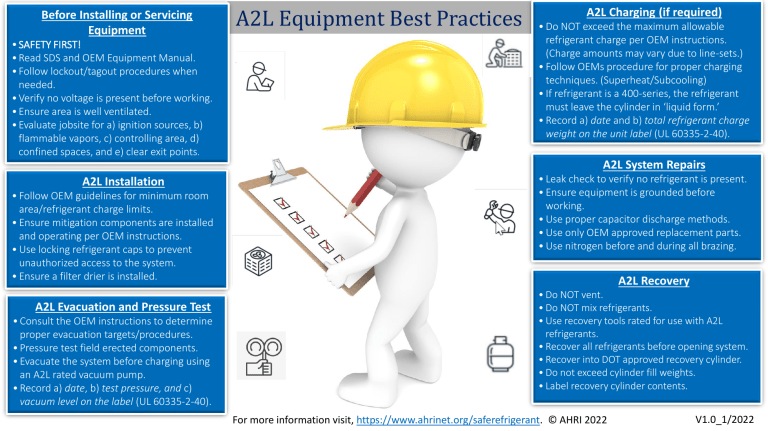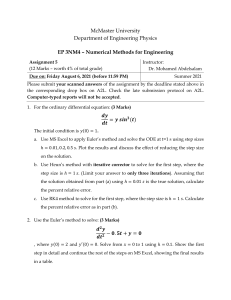
Before Installing or Servicing Equipment • SAFETY FIRST! • Read SDS and OEM Equipment Manual. • Follow lockout/tagout procedures when needed. • Verify no voltage is present before working. • Ensure area is well ventilated. • Evaluate jobsite for a) ignition sources, b) flammable vapors, c) controlling area, d) confined spaces, and e) clear exit points. A2L Equipment Best Practices A2L Charging (if required) • Do NOT exceed the maximum allowable refrigerant charge per OEM instructions. (Charge amounts may vary due to line-sets.) • Follow OEMs procedure for proper charging techniques. (Superheat/Subcooling) • If refrigerant is a 400-series, the refrigerant must leave the cylinder in ‘liquid form.’ • Record a) date and b) total refrigerant charge weight on the unit label (UL 60335-2-40). A2L System Repairs A2L Installation • Follow OEM guidelines for minimum room area/refrigerant charge limits. • Ensure mitigation components are installed and operating per OEM instructions. • Use locking refrigerant caps to prevent unauthorized access to the system. • Ensure a filter drier is installed. A2L Evacuation and Pressure Test • Consult the OEM instructions to determine proper evacuation targets/procedures. • Pressure test field erected components. • Evacuate the system before charging using an A2L rated vacuum pump. • Record a) date, b) test pressure, and c) vacuum level on the label (UL 60335-2-40). • Leak check to verify no refrigerant is present. • Ensure equipment is grounded before working. • Use proper capacitor discharge methods. • Use only OEM approved replacement parts. • Use nitrogen before and during all brazing. A2L Recovery • Do NOT vent. • Do NOT mix refrigerants. • Use recovery tools rated for use with A2L refrigerants. • Recover all refrigerants before opening system. • Recover into DOT approved recovery cylinder. • Do not exceed cylinder fill weights. • Label recovery cylinder contents. For more information visit, https://www.ahrinet.org/saferefrigerant. © AHRI 2022 V1.0_1/2022





